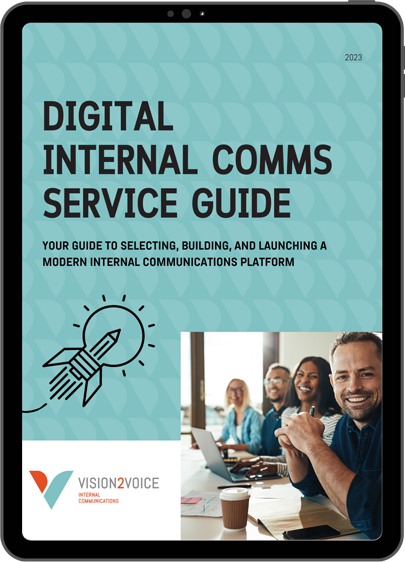“The mind that is open to a new idea never returns to its original size.”
~ Albert Einstein
Every day, internal communications professionals hear comments like:
~ People are too busy to read.
~ Can you make the content engaging? (Whatever “engaging” means)
~ No one is interested in that information
But here’s the thing – humans are curious, and the impulse to seek information and explore new things is a basic human trait. Curiosity has put a person on the moon, created new art forms, and been behind every important scientific discovery.
Rather than cutting content, limiting information, and restricting the amount of information we share, we should awaken employees’ natural curiosity instead.
The benefits of curiosity
Awakening and encouraging curiosity in organizations is a good thing. Take, for example, Google’s 20% Project. This initiative famously encouraged staff to spend 20% of their time pursuing passion projects and has allowed employees to explore ideas that led to the invention of Gmail and AdSense. It turns out that nurturing curiosity in organizations helps them succeed in many ways:
It encourages innovation. When individuals seek out new information, ask questions, and explore new possibilities, this leads to new ideas, new products, and the innovation organizations need to gain a competitive edge.
It fosters learning. When people are curious, they are motivated to learn new things and typically have a growth mindset. This learning mindset leads to greater resilience and adaptability in organizations, an essential characteristic for success in today’s rapidly changing business environment.
It improves problem-solving. Curious people ask questions and seek solutions to problems, which leads to more effective problem-solving and decision-making in organizations.
It enhances collaboration. Curiosity can promote collaboration and teamwork within organizations. People are more likely to work together to achieve common goals when they are curious about each other’s perspectives and ideas. And when we are interested, we are less likely to fall prey to dangerous types of bias, such as action or confirmation bias.
Curiosity and internal communication
Curiosity is not just good for organizations –it’s good for internal communication too! And by understanding the neuroscience and psychology behind curiosity, you can nurture a culture of curiosity in your organization while driving better results with your internal communications.
Here are three strategies you can use right now to spark curiosity:
1. Highlight a gap in knowledge
Knowledge gaps create discomfort and trigger our curiosity. What did Rhianna wear to the Met Gala that has everyone talking? Who was Jill Biden’s unexpected guest at the coronation of King Charles? These classic clickbait headlines highlight a gap in your knowledge and pique your curiosity to know more – and 20 minutes later, you are still reading news on Huffington Post when you really should have been cooking dinner.
Why not borrow tricks from great headline writers and create titles that offer a sneak peek and make the reader want to learn more? While we don’t suggest using typical clickbait adjectives such as shocking or irritable, you can highlight a knowledge gap to encourage people to seek more information and encourage them to learn more.
In place of this: 10 shocking things you should know about our company strategy.
Try this: 10 remarkable things you should know about our company strategy.
And bonus points if you include a number in the headline letting readers know they will learn specific facts by reading the article.
2. Trigger the brain’s natural reward system
Research has shown that dopamine neurons respond to information in the same way they respond to other primary rewards. When we seek new knowledge and learn how things work, this information stimulates our brains like food and sex do. Scientists believe that rewarding curiosity with feel-good chemicals is a survival mechanism linked to our ability to learn about food sources and threats.
To do this, reward people when they read your newsletter article or explore information on your company intranet page. Take the time to build valuable, relevant, clear, straightforward and fresh content. You can do this by regularly checking in with employees to find out what topics they are interested in learning about, carefully monitoring communication metrics and data, and experimenting with different types of content.
2. Make it safe
Young children have an insatiable need to understand the world around them. They put everything in their mouth, test the limits of gravity by climbing everything (!), and have one question on repeat: WHY?
Kids aren’t afraid to ask questions, but as we mature, asking questions requires the courage to admit we may not know something. In the workplace, our default is to demonstrate confidence, expertise, and competence; because of that, we often suppress our curiosity.
When leaders recognize the power of exploration and emphasize the importance of intellectual humility (nobody knows everything!), the workplace becomes safer to be curious. Creating a narrative with the proper framing is critical to remind people that not knowing everything is a natural part of the learning and growth necessary for adapting in a world where the pace of change is accelerating.
Try this: Our strategy is to better serve our customers by delivering faster, smarter and better.
Instead of this: Our strategy is to improve how we serve our customers, and together, we will learn what it takes to achieve this goal.
Now is the time to unlock the power of curiosity as part of your internal communication strategy. Have questions or need help figuring out where to start? The Vision2Voice team is just an email away – contact us today to start the conversation.







